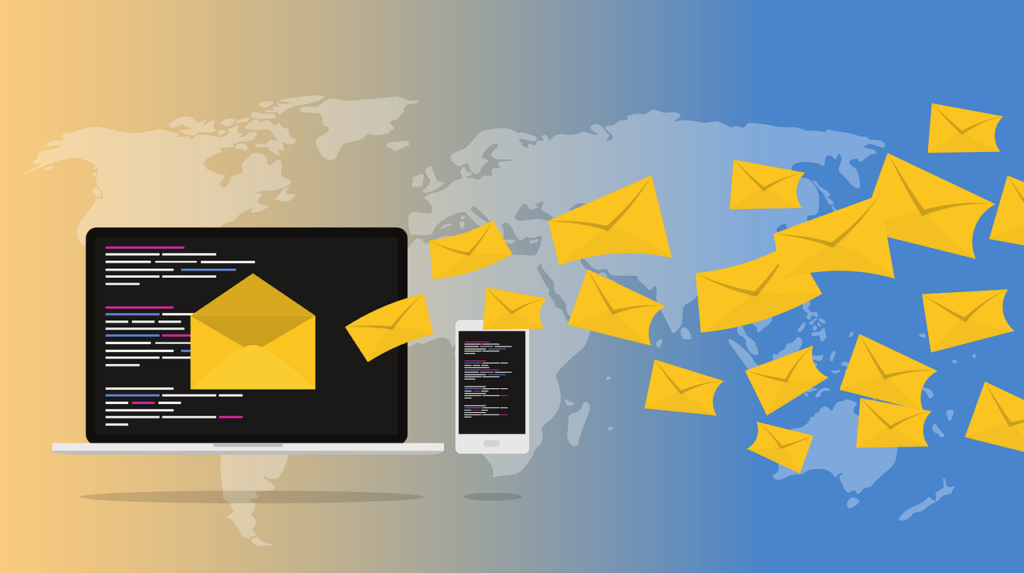Email marketing remains a vital and effective strategy for businesses to connect with their target audience. It offers a direct and personalized channel to deliver messages, promote products or services, and nurture customer relationships. However, the email marketing landscape is dynamic and constantly evolving. To stay competitive and maximize the impact of your email campaigns, it is crucial to stay updated with emerging email marketing trends and technologies.
With the rapid advancement of technology, consumer preferences and behaviors are continuously shifting. New trends and technologies are reshaping the way we approach email marketing. By keeping abreast of these developments, marketers can leverage innovative strategies and tools to create engaging, personalized, and targeted email experiences. This not only helps to capture the attention of recipients but also increases the chances of driving conversions and achieving campaign objectives.
Staying updated with emerging email marketing trends and technologies allows marketers to adapt and respond to changing market dynamics. It enables them to stay ahead of the curve, differentiate their brand, and maintain relevance in a highly competitive landscape. By embracing new possibilities and exploring cutting-edge techniques, marketers can unlock new opportunities, optimize campaign performance, and achieve greater success in their email marketing efforts.
In the following sections, we will delve into the emerging email marketing trends and technologies that you should watch closely. We will explore how these trends can be implemented and provide actionable insights on incorporating these technologies into your email marketing strategy. Let’s dive in and discover the future of email marketing together.
Emerging Email Marketing Trends and Technologies
Artificial Intelligence (AI) Integration
Artificial Intelligence (AI) is revolutionizing email marketing by enabling advanced personalization and automation. AI algorithms can analyze large amounts of customer data to generate personalized content recommendations tailored to individual preferences. This level of personalization enhances the relevance and engagement of email campaigns. Additionally, AI-powered automation optimizes campaign performance by continuously analyzing data, adjusting sending times, and refining targeting strategies. By integrating AI into email marketing, businesses can deliver highly targeted and optimized campaigns that resonate with their audience.
Interactive Emails
Interactive emails offer an immersive and engaging experience, capturing the attention of recipients and encouraging active participation. By incorporating elements such as gamification, embedded surveys, and interactive product showcases, marketers can create interactive experiences within the email itself. This interactive approach enhances customer engagement, increases click-through rates, and drives conversions. Interactive emails also provide valuable insights into customer preferences and behaviors, helping businesses refine their marketing strategies and improve the effectiveness of their campaigns.
Mobile Optimization
With the majority of email opens happening on mobile devices, optimizing emails for mobile is essential. Mobile optimization ensures that emails are displayed correctly and provide a seamless user experience across various screen sizes and devices. Responsive email design, which adapts the layout and content based on the device being used, is a key technique for mobile optimization. Marketers should also consider mobile-friendly content, concise subject lines, clear calls-to-action, and easy-to-tap buttons to maximize engagement and conversions on mobile devices.
Advanced Personalization
Advanced personalization techniques go beyond basic personalization to deliver highly targeted and relevant content to individual recipients. Dynamic content allows marketers to customize email elements based on recipient data, such as location, past purchases, or browsing behavior. Behavior-based triggers enable automated emails to be sent based on specific actions or events, such as abandoned cart reminders or post-purchase follow-ups. Segmented campaigns divide the audience into distinct groups based on demographics, interests, or engagement levels, allowing tailored messaging and higher response rates. Advanced personalization creates a personalized experience that resonates with recipients, resulting in improved engagement and conversions.
Data-driven Insights
Data analytics plays a crucial role in optimizing email marketing campaigns. By leveraging data-driven insights, marketers can gain a deeper understanding of customer behavior, preferences, and campaign performance. Analyzing metrics such as open rates, click-through rates, conversions, and subscriber engagement provides valuable feedback on the effectiveness of email campaigns. These insights help identify trends, refine targeting strategies, and make data-backed decisions to enhance campaign performance. By using analytics tools and platforms, businesses can extract meaningful insights from their email marketing data, enabling continuous improvement and better results.
Automation and Workflows
Email automation and workflows streamline and enhance email marketing efforts. Automation allows marketers to automate repetitive tasks, such as welcome emails, birthday greetings, or post-purchase follow-ups. By setting up triggers based on specific actions or events, marketers can deliver timely and personalized emails to their subscribers. Workflows enable the creation of dynamic customer journeys, where emails are sent based on predefined conditions or interactions. This personalized approach nurtures leads, guides customers through the sales funnel, and enhances customer engagement. By implementing automation and workflows, businesses can save time, improve targeting, and provide a tailored experience to their audience.
Implementing the Emerging Trends and Technologies
AI Integration
To implement AI integration in your email marketing strategy, follow these steps:
- Evaluate and select an AI tool or platform that aligns with your business goals and email marketing needs.
- Integrate the AI tool with your email marketing software or platform to access customer data.
- Utilize AI algorithms to analyze customer data and generate personalized content recommendations.
- Implement AI-driven campaign optimization features to continuously improve email performance.
Interactive Emails
To create interactive emails, consider the following steps:
- Use email design tools or specialized platforms that support interactive elements.
- Identify the interactive elements that align with your campaign goals, such as quizzes, polls, or product showcases.
- Design and incorporate interactive elements into your email templates.
- Test the interactive features across different email clients and devices to ensure compatibility and functionality.
Mobile Optimization
Ensure optimal mobile optimization of your emails with these steps:
- Adopt responsive email templates that automatically adjust to fit various screen sizes.
- Optimize email content for mobile viewing by keeping it concise, clear, and easy to read.
- Test your emails on different mobile devices and email clients to ensure proper display and functionality.
- Pay attention to mobile-specific design elements, such as font size, button size, and spacing, to enhance usability.
Advanced Personalization
Implement advanced personalization techniques using these guidelines:
- Leverage customer data to segment your audience based on demographics, behaviors, or preferences.
- Utilize dynamic content blocks to customize email elements based on recipient data.
- Implement behavior-based triggers to automate emails based on specific actions or events.
- Use email marketing software or platforms with built-in personalization and automation capabilities for seamless implementation.
Data-driven Insights
Leverage data-driven insights in your email marketing strategy by following these steps:
- Utilize email marketing software with robust analytics capabilities to track key metrics.
- Analyze email performance metrics such as open rates, click-through rates, conversions, and engagement.
- Identify trends and patterns in customer behavior and preferences based on data analysis.
- Use these insights to optimize your email content, segmentation, and targeting strategies for improved campaign performance.
Automation and Workflows
Implement automation and workflows for efficient email marketing with these steps:
- Choose an email automation software or platform that suits your business needs and integrates with your existing tools.
- Identify the key touchpoints and events in the customer journey where automation can enhance engagement.
- Set up triggered campaigns based on specific actions or events, such as welcome emails, abandoned cart reminders, or post-purchase follow-ups.
- Create personalized customer journeys by defining workflows that guide subscribers through different sales funnel stages.
Conclusion
Email marketing continues to be a powerful tool for businesses to connect with their audience and drive conversions. However, staying updated with emerging trends and technologies is crucial to stay ahead in the competitive landscape. In this article, we explored several emerging email marketing trends and technologies that can significantly enhance your email campaigns.
Artificial Intelligence (AI) integration enables personalized content recommendations and automated campaign optimization, leading to higher engagement and conversions. Interactive emails provide an immersive and engaging experience, fostering customer participation and increasing click-through rates. Mobile optimization ensures that your emails display correctly and provide a seamless experience across various devices. Advanced personalization techniques allow for highly targeted and relevant content, enhancing engagement and driving better results. Data-driven insights provide valuable feedback to optimize your campaigns and refine targeting strategies. Automation and workflows streamline your email marketing efforts, saving time and delivering personalized customer journeys.
By implementing these trends and technologies, you can unlock new opportunities and maximize the effectiveness of your email marketing strategy. Remember to carefully choose the right tools and platforms that align with your business goals and leverage customer data to deliver personalized experiences. Continuously analyze metrics and data to make data-driven decisions and refine your strategies.
As the email marketing landscape evolves, it is essential to stay curious, experiment with new ideas, and adapt to changing customer preferences. Embrace these emerging trends and technologies, and stay at the forefront of email marketing to achieve greater success and drive meaningful connections with your audience.


